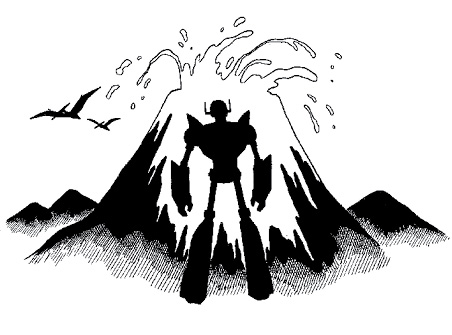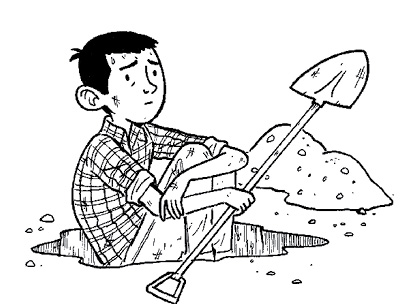Up Your Score: ACT, 2014-2015 Edition
The Underground Guide
Chris Arp and Veritas Tutors and Test Prep with Ava Chen, Jon Fish, and Zack Swafford
Illustrations by Julian Callos
Workman Publishing, New York
Acknowledgments
This book would never have happened without the initiative and continued support of Matt Bardin, who built Veritas Tutors and Test Prep with true vision, and Margot Herrera at Workman Publishing, for whom the title of senior editor does not begin to suffice. Everyone at Workman has been fantastic, but special thanks are due to Orlando Adiao for his design brilliance, Jessica Rozler and Marta Jaremko for their incredible attention to detail, and Heather Schwedel for, among many other things, her encyclopedic knowledge of popular culture. Ava, Zack, and Jon, you are battle-tested troopers, terrific editors and writers, great mathematicians, and true comedians.
The book also owes a great deal to the experience and wisdom of everyone at Veritas, but mason jars of gratitude are especially due to Teddy Martin and Sam Levin for their overflowing math brains, and to Will Chancellor for his overflowing everything brain. Many shukrans to Steve Reiss for his math magic, and to Gail Ross for her legal magic. Buckets of appreciation to Larry, Manek, Paul, Michael, and everyone who helped create the Up Your Score series. Forty-ounce Big Gulps of envy and respect to Julian Callos for his superb illustrations. A German stein of appreciation to my sister, Rachel Ramstad, both for her design advice and her unflagging emotional support. And, as always, rooftop water towers of love to Helene Miller, Bill Arp, Lila Gault, and all my lovely and handsome friends.
CA
Thanks to Yi-Yi Tsai for being the foundation and support behind all my endeavors. And to Bill McKenzie for introducing me to Up Your Score: ACT and teaching me (nearly) everything I know.
AC
Many thanks to Tim and Angela Fish for being the most supportive parents a kid could ask for, and to Jake and David Fish for being pretty good, as far as older brothers go. Also to Jed Hilbert of Saint Xavier High School for his advice and encouragement as my standardized test guru.
JF
Thanks to Matt Swafford, Lisa Fitzpatrick, and Xander Swafford for doing the things families do, only better. To Alan Hermanns for irrefutably making my sense of humor what it is today. And to Annabeth, Linus, and Greg, along with Misters E and D. P. et al., for teaching me what I know and therefore was able to apply to the ACT.
ZS
Contents
Introduction: A Brief History of This Book
Lets Begin at the Beginning
Two hundred million years ago, the planet Earth was awesome. Gigantic monsters ruled the land. Stegosauruses bellowed primal war cries as they trampled squadrons of utahraptors. Pterodactyls wheeled through the sky, iguanodons nibbled on Jurassic mangoes, and volcanoes exploded nonstop.
Then an asteroid smushed everything, and Earth became as dull as all the other incredibly boring planets in the Milky Way.
But soon, things got better! Homo habilis evolved into humans, who created civilization. There were many different civilizations, and all of them were uniquely interestingbut the best was certainly the Mongolian Empire, because Mongolians put butter in their tea.
Civilization started off simple. You put some seeds in the ground, slaughtered a few animals, murdered a few enemies, went to sleep, then woke up and did it again. It was a straightforward cycle of farming, slaughter, murder, and sleep.
But, as time went on, things got more complicated. Now you had to do things like write Beowulf, invent the cotton gin, and file quarterly tax returns. Different people took different jobs and had to learn about such highfalutin ideas as medicine and the economy. So instead of simply grabbing a rake and a sword at age five, kids now had to go to school. As civilization increased in complexity, kids had to stay in school for longer and longer. Eventually, civilization created college.
But were kids supposed to just stroll in to whatever college they wanted? Not in the United States! In 1926, the College Board administered the first Scholastic Aptitude Test, or SAT, which was created to help schools decide which students to admit. The test was designed to judge a students ability to reason and posed questions that required a certain amount of puzzling to understand. But in 1959, a man in Iowa named Everett Franklin Lindquist decided that the SAT was not an accurate gauge of college readiness, so he created the American College Test, or ACT. Reasoning? I dont care about reasoning! Lindquist said. I want to know if these stinkin kids know their stinkin facts and stuff! His new test was designed to determine a students knowledge of the basic high school curriculum.
Regardless of whether kids decided to take the ACT (which was, at first, favored by the cowboys and cowgirls of the Midwestern states) or the SAT (which was favored by the latte-sipping preppies of the coastal states), they had to study. There were a number of popular methods for preparing for the test:
- Reading every book ever written and doing every math problem ever createdat least twice
- Paying a professor of applied aeronautics $5 to take the test for you
- Weeping
- Picking C for every answer choice, arguing that C could also stand for Correct
- Digging a hole in the ground and sitting in it
But by far the most popular study method was buying an enormous test-prep book and working through it. These books were not only heavy, but they also had the magic power of making you fall asleep after reading three words. As students moved through these books, they pined for the good old days of the volcanoes and the iguanodons and the utahraptors, before stupid college had ever been invented by stupid civilization.
But Then Something Great Happened...
One fateful day in the late 1980s, three high schoolers from Ithaca, New York, named Larry, Manek, and Paul were sitting around the cafeteria studying for the SAT. They were using a phone booksized study guide and decided that it sucked.
Its decided: This book sucks, Paul said. Its incredibly boring, the instructions are confusing, and the sample questions are filled with errors.
For sure, agreed Manek. It is as dull as the SAT itself.
We should write our own test-prep book, but make it useful and funny and clear, said Larry.
And it should be filled with sex and violence, Paul added. I generally prefer books with sex and violence.
So they wrote Up Your Score: The Underground Guide to the SAT, which turned out to be the best study guide ever written, even though they couldnt put in as much sex or violence as Paul wanted. While they couldnt know it at the time, that book would finally set Earth back on course to being the coolest planet in the Milky Way.
The UYS troop did a lot of smart things with their book. They made it interesting and funny. They filled the margins with cartoons. And they were wise enough to keep the book as brief as possible, while still covering all of the information and strategies necessary to ace the SAT. Plus, it was current. Every other year, one or two high schoolers who had earned a perfect score on the SAT were brought in as guest editors, so that they could share their knowledge and experience with readers and keep the book up-to-date.


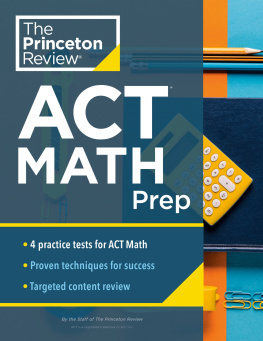
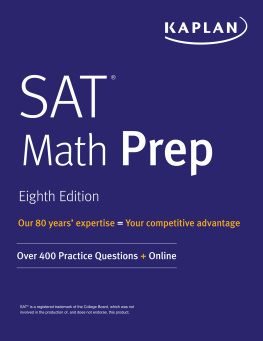
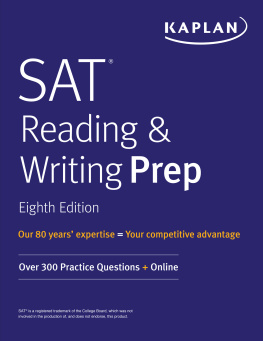
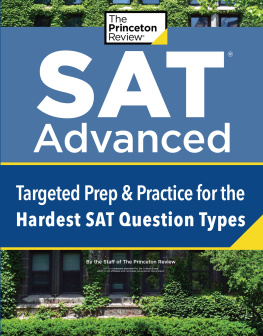
![ACT - The official ACT prep guide, [2018]: [the only official Prep Guide from the Makers of the ACT]](/uploads/posts/book/164684/thumbs/act-the-official-act-prep-guide-2018-the.jpg)

